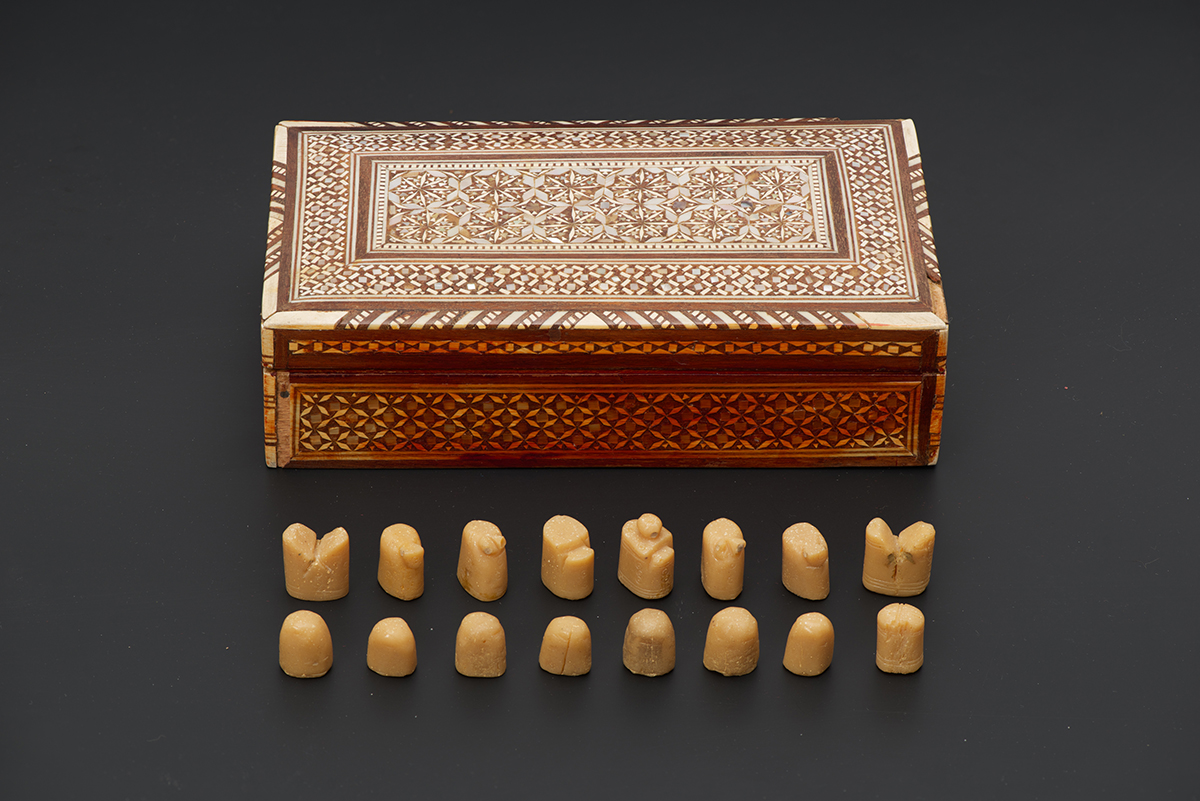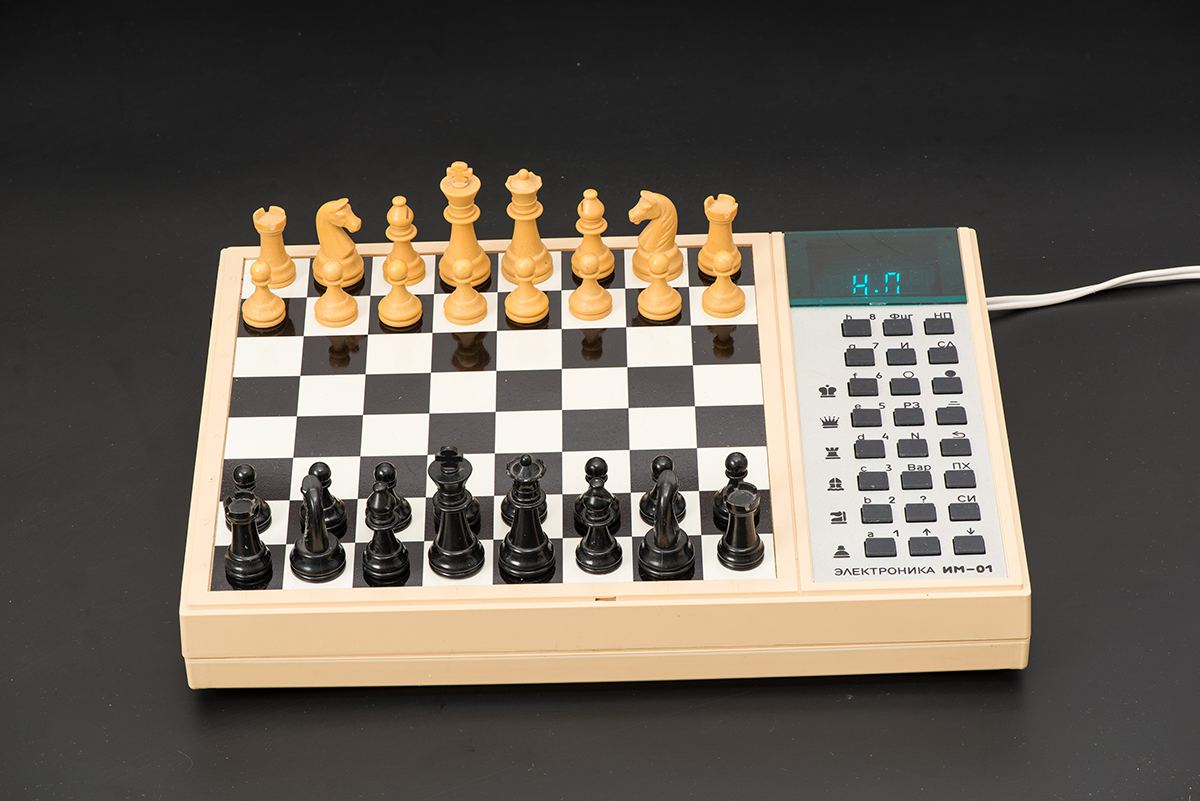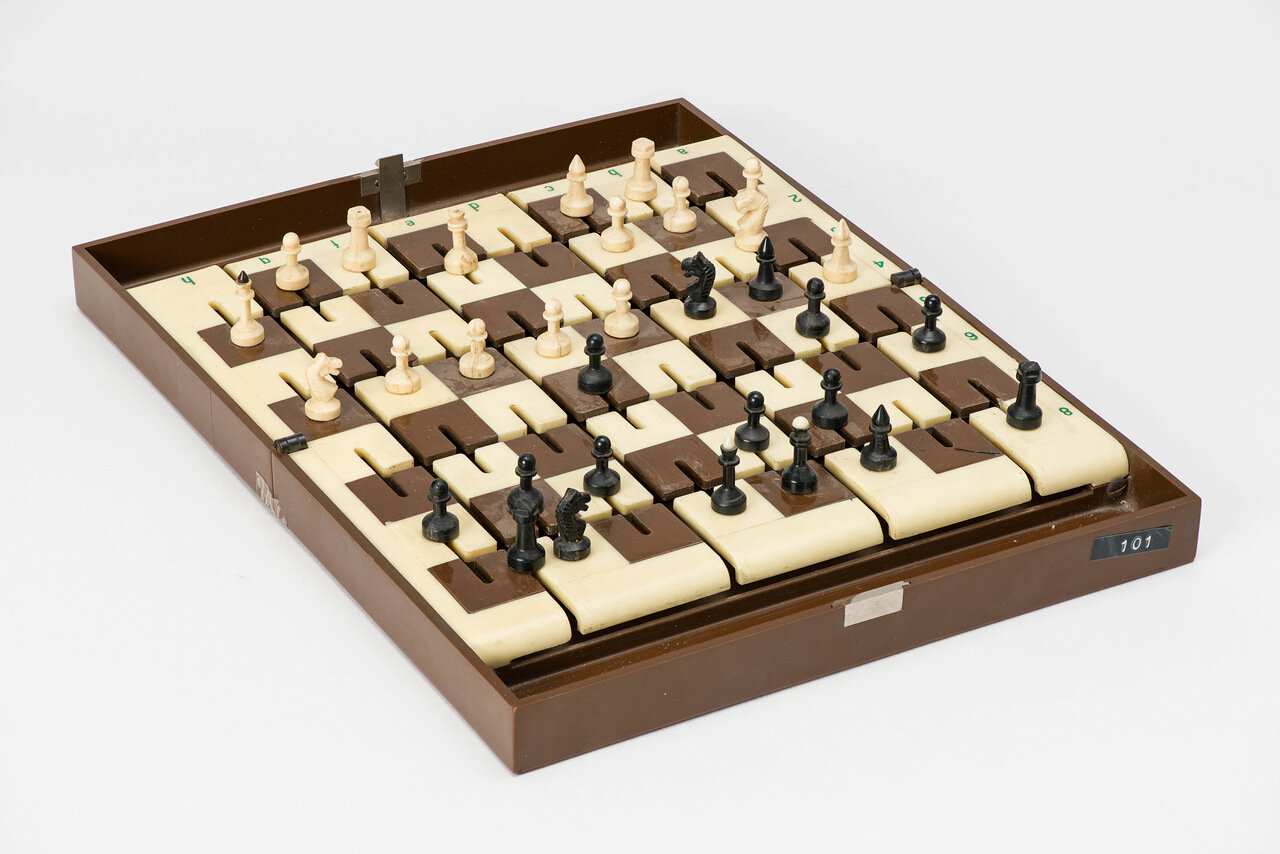Shatranj

Period
12th centuryPlace
Iran
Material
Stone
Location
Russia, Moscow, Chess Museum of the Central Chess Club
Category
The GameSubcategory
Chess sets
Curious fact
The initial setup in shatranj was essentially the same as in modern chess; however, the position of the white shah (king), on the right or left side was not fixed
In 1976, the famous grandmaster and rarity amateur David Bronstein returned home with a trophy — an unusual chess set in a box inlaid with mother of pearl. Not a single chessman can be guessed without a clue. All were made using the technique of medieval Persian chess — shatranj, as they called the game in the Arab East. As Islam forbade depiction of human figures and animals, all we can do is guess: a symbolic elongated horse muzzle on the second piece from the edge; slightly protruding elephant tusks on the next piece. The king is depicted as the royal throne, while the queen (“vizier” or “prime minister” in the East) is also a throne but a less lavish one. The edge piece is a mysterious creature — the Roc, the mighty and formidable mythic bird, in the silhouette of which the Europeans later discerned the “dovetail” of a fortress wall merlon (the rook). The heyday of shatranj in the East begins in the 10th–11th centuries, when the names of the first recognized masters make history (e.g., Al-Suli), while the celebrated poet Omar Khayyam (1048–1131) even describes life through chess: 'Tis all a Chequer-board of Nights and Days Where Destiny with Men for Pieces plays: Hither and thither moves, and mates, and slays, And one by one back in the Closet lays.


